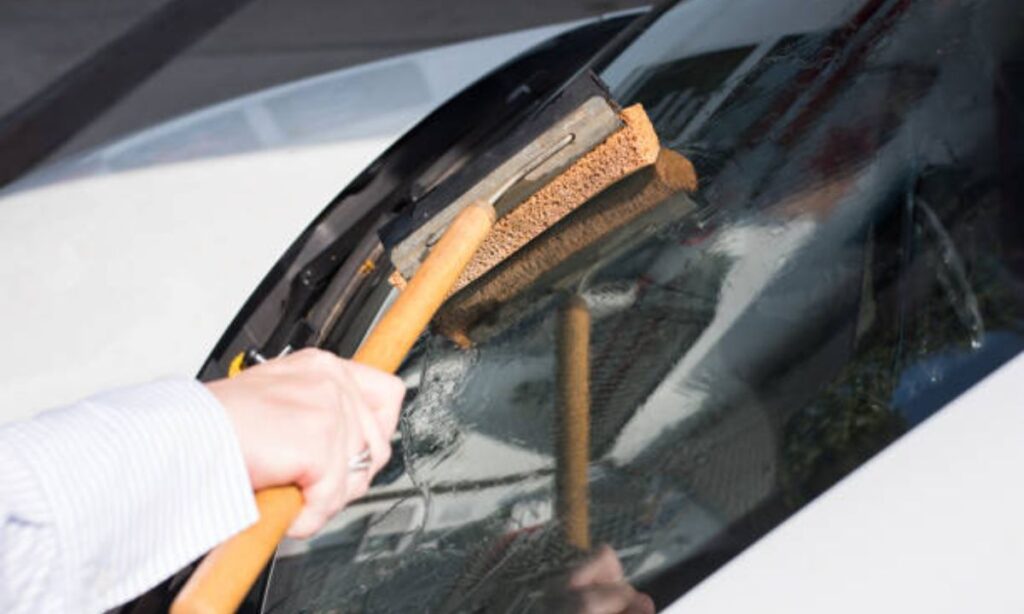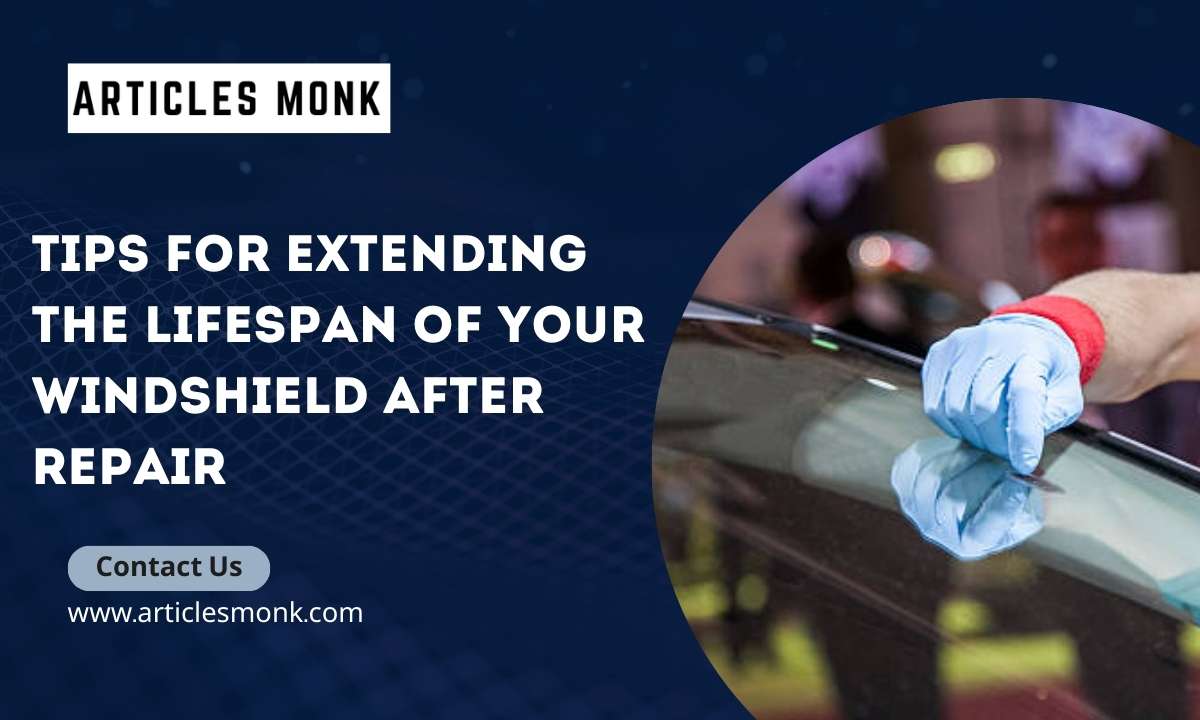Tips for Extending the Lifespan of Your Windshield After Repair
When it comes to the safety and overall well-being of your vehicle, few components are as crucial as your windshield. It acts as a protective barrier against the elements, road debris, and even accidents. Windshield damage is a common occurrence, but the good news is that minor issues can often be repaired rather than necessitating a full replacement. In this guide, we will explore essential tips for extending the lifespan of your windshield after repair, helping you save money and ensure the safety of your vehicle.
Understanding Windshield Damage

Before we delve into the tips, it’s important to understand the various types of windshield damage and when repair is the best course of action. Recognizing the severity of the damage is crucial for making informed decisions regarding the care and maintenance of your windshield.
Windshield damage typically falls into the following categories:
Chips: These are small, often circular damage areas caused by rocks or other debris hitting the windshield.
Cracks: Cracks are longer and more severe than chips, often forming lines across the glass due to more significant impacts.
Pits: Pits are minor imperfections on the glass’s surface caused by smaller debris, like sand or fine gravel.
Learn More: Understanding Common Windshield Issues and Their Repair Solutions
Whether you should repair or replace your windshield depends on the extent of the damage. In general:
Chips: Repair is usually recommended for chips smaller than a quarter coin in diameter. Prompt action can prevent them from spreading and necessitating a full replacement.
Cracks: Cracks are more concerning, and the decision to repair or replace depends on their size and location. Repair may be possible for cracks less than 12 inches, but it’s important to consider their position, as cracks near the edge of the windshield can weaken the glass.
Pits: While pits are often too minor to affect your windshield’s structural integrity, they can obstruct your view and lead to glare. Polishing may help in such cases.
Understanding the type and extent of your windshield damage is the first step in determining whether repair is a viable option. The timeliness of your response is also crucial because waiting too long can make repair impossible, requiring a full replacement.
Proper Windshield Repair Process
Once you’ve decided to pursue windshield repair, it’s essential to follow the correct procedures to ensure the job is done effectively and with long-lasting results.
Choosing a Reputable Repair Service
Selecting a reputable and experienced repair service is critical. Look for businesses or technicians who are certified by organizations such as the National Windshield Repair Association (NWRA) or the Auto Glass Safety Council (AGSC). Certified professionals are more likely to follow industry standards and provide quality work.
Additionally, consider the following factors when choosing a repair service:
Customer reviews and recommendations: Ask friends and family for recommendations or read online reviews to gauge the quality of service provided by a repair center.
Warranty: Inquire about warranties for the repair work. A reputable repair service should provide a warranty that covers issues such as cracks spreading after the repair.
Insurance: Check whether your insurance policy covers windshield repairs, as this can significantly reduce your out-of-pocket expenses.
Repair vs. Replacement Considerations

As previously mentioned, the decision to repair or replace your windshield depends on factors like the type and extent of the damage. Repair is a cost-effective option for minor damage, but there are certain considerations to keep in mind:
Quality of Repair: The quality of the repair work is critical for ensuring the windshield remains structurally sound. A well-executed repair should leave minimal visible distortion.
Safety: Safety should always be a top priority. If the damage is in the driver’s line of sight or near the edges of the windshield, it may be safer to opt for replacement.
Local Laws: Be aware of local laws and regulations that pertain to windshield damage. In some areas, certain types of damage may require replacement rather than repair.
Further Reading: Comparing Windshield Repair vs. Replacement
Factors That Impact Repair Quality
The success of your windshield repair also depends on several factors that may affect the overall quality and durability of the fix:
Type of Resin: The type of resin used in the repair process can impact the longevity and clarity of the repair. High-quality, optically clear resin is preferable.
Proper Curing: Ensuring that the resin is adequately cured is crucial for a strong and lasting bond. Technicians must follow the correct curing process, often using ultraviolet (UV) lamps.
Surface Preparation: Properly preparing the damaged area, such as removing loose glass fragments, dirt, and moisture, is vital for the repair’s success.
Technician Skill: The expertise and experience of the technician performing the repair play a significant role in the quality of the final result.
With the proper repair service and the right considerations in place, your windshield repair can be highly effective and long-lasting.
Tips for Extending Windshield Lifespan After Repair
Now that you’ve successfully repaired your windshield, it’s time to focus on maintaining and extending its lifespan. Here are some valuable tips:
Tip 1: Careful Driving Habits
1. Avoiding Gravel and Debris: One of the primary causes of windshield damage is debris kicked up by vehicles ahead of you. To minimize the risk, maintain a safe following distance and be cautious when driving on gravel roads. If possible, avoid following large trucks or construction vehicles.
2. Maintaining a Safe Following Distance: Keeping a safe distance from the vehicle in front of you not only reduces the risk of windshield damage but also minimizes the risk of accidents. Tailgating increases the chance of rocks and debris hitting your windshield.
Tip 2: Avoid Temperature Extremes
1. Parking in the Shade: Extreme temperatures, particularly heat, can weaken the glass and make it more susceptible to damage. Whenever possible, park your vehicle in the shade to protect your windshield from direct sunlight.
2. Using Windshield Sunshades: During sunny days, using a windshield sunshade can significantly reduce the internal temperature of your vehicle. This not only helps your windshield but also extends the life of your dashboard and interior.
Tip 3: Regular Maintenance
1. Cleaning and Caring for the Windshield: Regularly clean your windshield, both inside and outside. Use a mild glass cleaner and a microfiber cloth to avoid scratches. A clean windshield enhances visibility and helps maintain its integrity.
2. Inspecting for New Damage: After a repair, periodically inspect your windshield for new damage. Address any new chips or cracks promptly, as they can quickly compromise the structural integrity and safety of the glass.
Post-Repair Maintenance
In addition to the tips for extending your windshield’s lifespan, it’s essential to understand the importance of post-repair maintenance.

The Importance of Post-Repair Inspections
Regular post-repair inspections are crucial to ensure that the repaired area remains structurally sound and free from defects. These inspections should be carried out by a professional, and they include:
Visual Inspections: A technician should visually inspect the repair to ensure there are no signs of spreading cracks or other issues.
Strength Testing: Some professionals may conduct strength tests to ensure that the repaired area can withstand the stresses placed on a windshield.
Quality Assurance: Confirm that the repair meets industry standards and the technician’s warranty guidelines.
Dealing with Additional Damage
If your post-repair inspection uncovers new damage or issues with the repair, it’s essential to address them promptly. Ignoring additional damage or defects can compromise the safety of your windshield, putting you and your passengers at risk.
Common Mistakes to Avoid
While we’ve discussed the right way to care for your repaired windshield, it’s equally important to understand common mistakes that can shorten its lifespan or compromise your safety.
Using DIY Repair Kits Incorrectly
Do-it-yourself (DIY) windshield repair kits are available, but using them incorrectly can lead to subpar results and even worsen the damage. It’s best to leave windshield repairs to professionals who have the expertise and proper tools to do the job right.
Neglecting Minor Damage
It’s easy to dismiss minor chips and cracks as inconsequential, especially if they don’t obstruct your view. However, even small damage can weaken the structural integrity of the windshield, making it more susceptible to further damage.
Delaying Repairs
Delaying repairs is a common mistake that can lead to more extensive damage. As soon as you notice windshield damage, take action. Small issues are often repairable, but they can quickly worsen if left unattended.
The Cost of Neglect
Understanding the consequences of neglecting your windshield can be a powerful motivator for proper care and maintenance. Neglect can result in:
Safety Concerns
A damaged or weakened windshield can pose significant safety hazards, especially during accidents or impacts. It may fail to protect you and your passengers in the event of a collision. Additionally, reduced visibility due to cracks and chips can lead to accidents.
Financial Implications
Neglecting windshield damage can also be costly in the long run. What could have been a simple and inexpensive repair may escalate into a full replacement if the damage spreads or worsens. Furthermore, a damaged windshield can affect your vehicle’s overall resale value.
Read More: The Cost-Effective Approach
Conclusion
In conclusion, your vehicle’s windshield is a critical safety feature that requires proper care and maintenance. Repairing minor damage is not only cost-effective but also essential for your safety. By following the tips provided in this guide and avoiding common mistakes, you can extend the lifespan of your windshield after repair, ensuring clear visibility and peace of mind on the road. Remember that prompt action, regular inspections, and proper care are the keys to a longer-lasting and safer windshield. Your vehicle, your wallet, and your safety will thank you for it.

